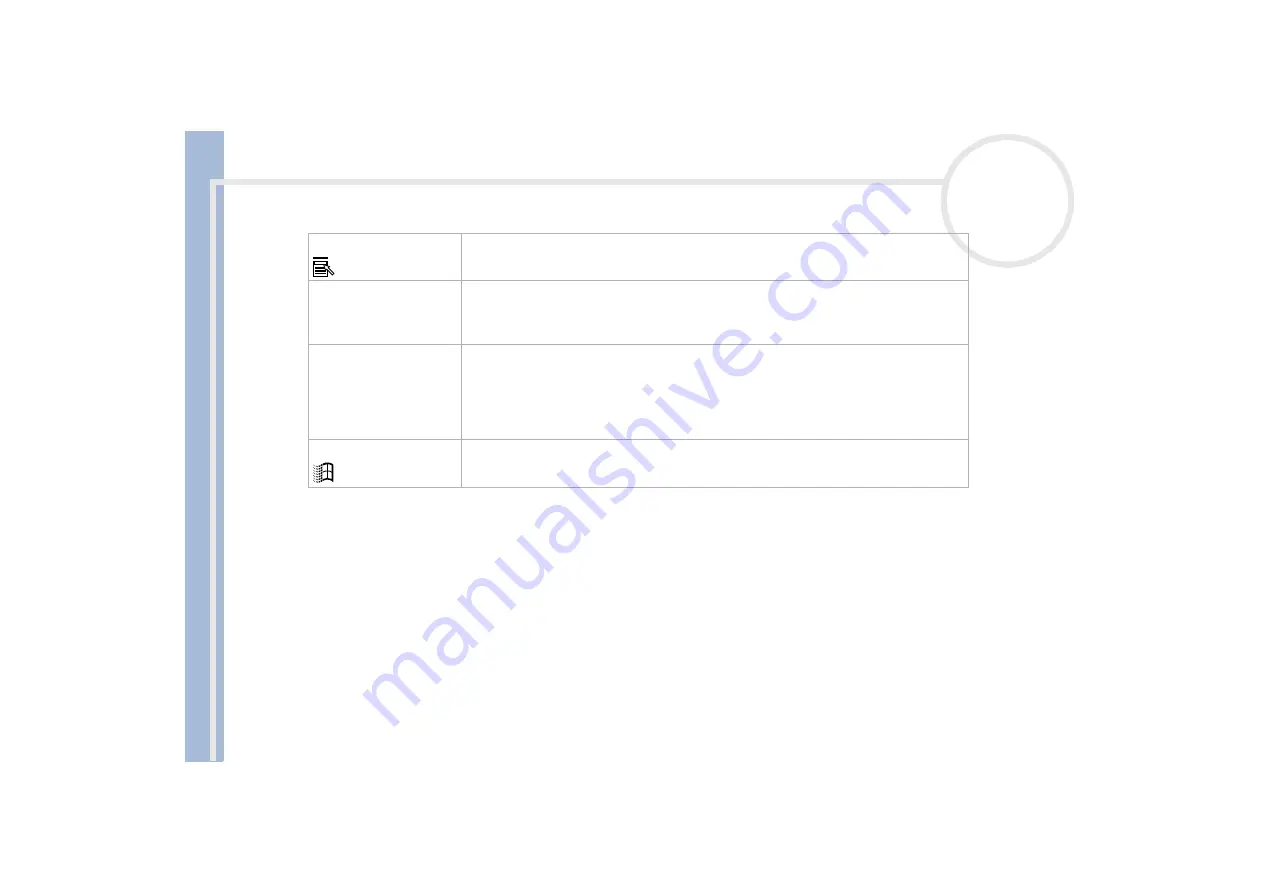
Sony Not
e
book Us
er
G
u
id
e
Using your notebook
25
Application key (7)
The Application key displays a shortcut menu; pressing this key is equivalent to clicking the
right mouse button.
Numeric keypad area (8)
Contains the keys found on a typical calculator. Use the numeric keypad area to type
numbers or to perform mathematical calculations such as addition and subtraction. Note
that you must press the
<Num Lock>
key to activate the numeric keypad. When you do
so, the
<Num Lock>
indicator illuminates.
Operator keys (9)
Several keys are always used with at least one other key:
<Ctrl>, <Alt>,
and
<Shift>.
When held down with another key, the
<Ctrl>
(Control) and
<Alt>
(Alternate) keys offer
another way to execute commands. For example, in many applications, instead of
choosing the
Save
command from a menu, you can hold down
<Ctrl>
and press
S
(referred to as
<Ctrl>+<S>
). The
<Shift>
key is used to produce capital letters or special
symbols such as @ and $.
Windows
®
key (10)
The key with the
Windows
®
logo displays the Windows
®
Start menu; it is equivalent to
clicking the
Start
button on the taskbar.
Keys
Descriptions
















































